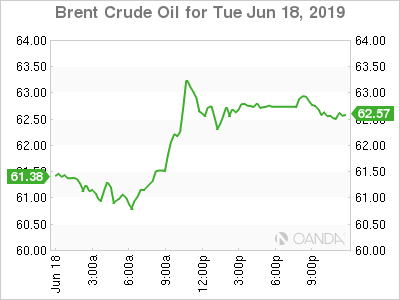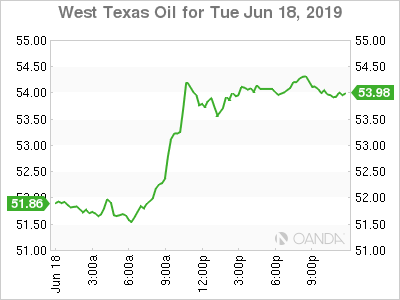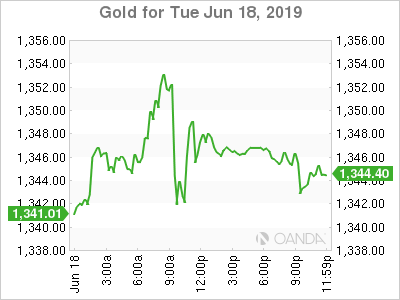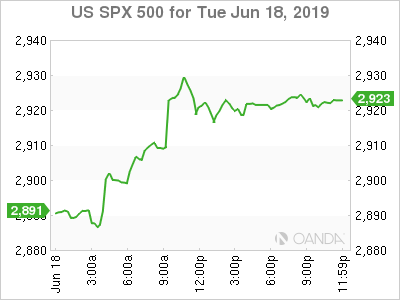The Canadian dollar rose 0.23 percent on Tuesday. US President Donald Trump unlocked risk appetite this morning by tweeting that he had a telephone conversation with Chinese President Xi and agreed to meet in the sidelines of the G20 in Japan. The ECB had earlier said that it could cut rates if needed, which added to the anticipation of what the Fed will announce on Wednesday as its two day Federal Open Market Committee (FOMC) meeting comes to an end.
Oil prices jumped as the trade war factor had weighed on global growth forecasts, and with supply issues still very recent the price of crude was higher. Gold had a mixed session, that ended in the positive as the ECB comments were positive for the metal, but were cancelled out by the optimism on a potential trade deal stoking risk appetite.
The Bank of Canada (BoC) has stayed in the sidelines keeping the interest rate unchanged, and if the U.S. Federal Reserve decides to signal a benchmark rate cut in the near term it would drive the Loonie higher as the rate differential would shrink.
Oil prices surged on Tuesday after US President Donald Trump tweeted encouraging developments with China. A sit down with Chinese President Xi as part of the G20 meeting in Japan at the end of the month appears to be in the works. The Chinese official media confirmed that the two leaders are talking with a possible talk during the G20. The trade war between the two largest economies has been a negative factor for energy prices. The Canadian benchmark rate is 1.75 percent, while the Fed funds rate is in a range of 2.25 to 2.50 percent.
The Fed meeting this week got an even bigger spotlight after European Central Bank (ECB) President Mario Draghi said he is ready to cut rates if necessary. The US central bank now appears close to signalling an imminent rate cut, to stimulate the economy and avoid falling into a recession.
The anxiety around supply disruptions has died down as trade optimism is surging. Middle East conflict is sure to influence crude prices, with a frenetic end to the month of June as the G20 meeting and more details emerge on the possibility of an extension to the OPEC+ supply cut agreement.
Gold is higher on Tuesday on a volatile day for trading the yellow metal. Gold broke through the $1,350 price level after the ECB President announced a rate cut was possible if needed. After the Fed led major central banks in a move towards normalizing rates, the economy could warrant a 180-degree turn and a return to lower rates.
Lower rates are positive for the yellow metal, but with a tweet Donald Trump infused optimism into the market saying that its possible for Chinese President Xi and himself to have a meeting while they are both in Japan for the G20 at the end of the month. Gold has been a favorite destination of investors seeking a safe haven from the US-China tariff uncertainty. Hope for an end to the back and forth aggression could be near and reduces the appetite for the metal.
Conflict in the Middle East and Brexit concerns will remain and will continue to push gold higher as investor appetite for risk wanes during high volatility periods.
Stocks
US stocks were back to a record-breaking pace as US and China appear to be headed to a trade meeting while both leaders take part in the G20 in Japan at the end of the Month. Central banks have been dovish, but after the ECB said in no uncertain terms that it would cut rates if needed, the spotlight is now on the US Federal Reserve who kicked off its two-day meeting today.
The Fed is not expected to cut rates in June, but could, in fact, signal a willingness to do it in the short term. The biggest risk to the stock rally is how exactly the messaging from the central bank comes across. Not dovish enough could trigger a sell-off as the market is now pricing in more than one rate cut in 2019.
The Fed is facing a challenging balancing act. How to stay hawkish on the economy and minimize recession anxiety, but at the same time remain dovish and ready to act if needed. A less than full dove statement and press conference from Powell could reverse gains in the stock market
